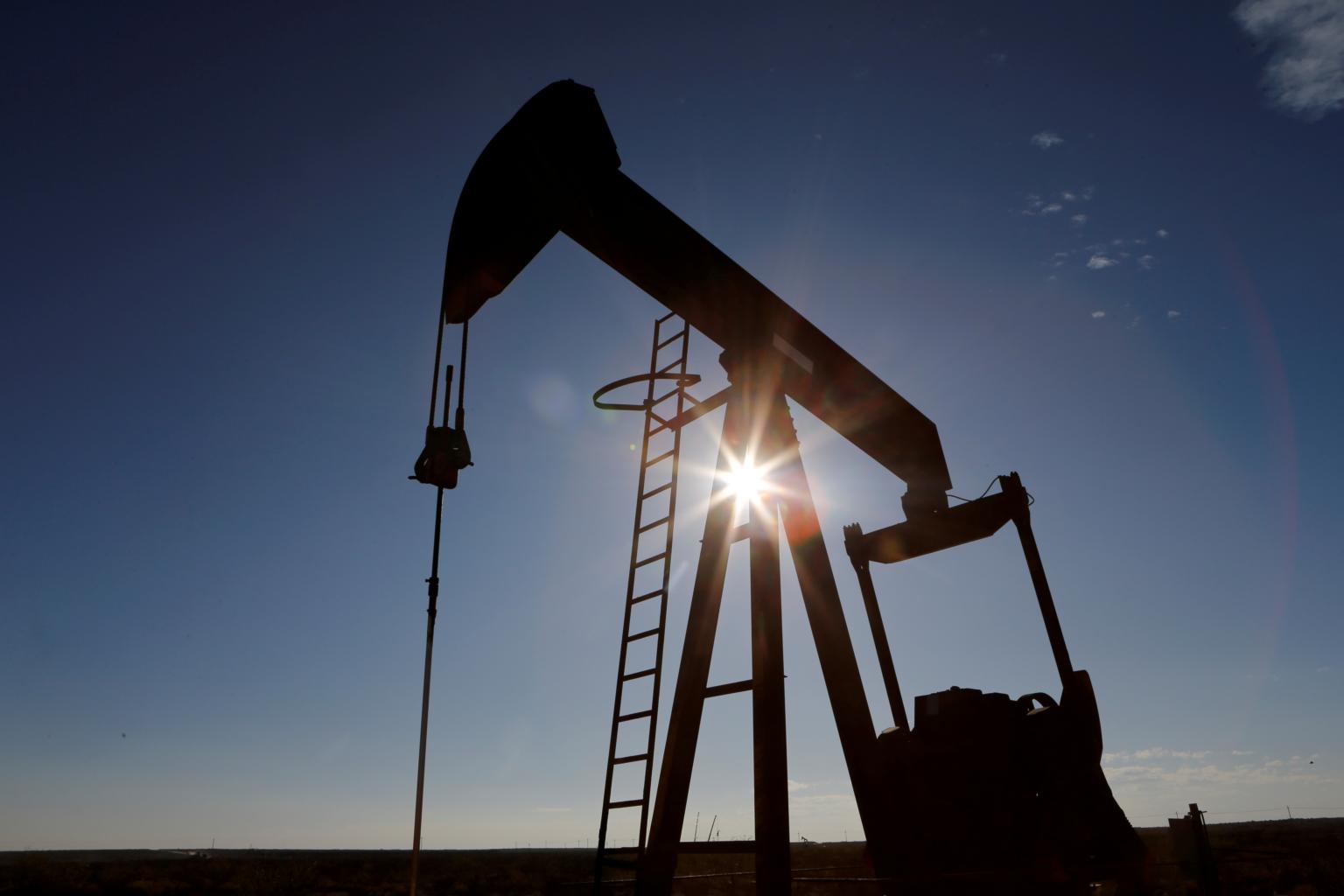US oil plunges 20% to below US$15 with storage filling up as demand shrivels
Sign up now: Get ST's newsletters delivered to your inbox

The oil industry has been reducing production in the face of an estimated 30 per cent decline in fuel demand worldwide.
PHOTO: REUTERS
Follow topic:
LONDON (BLOOMBERG, AFP) - Oil extended its slide on Monday (April 20), falling to the lowest in more than two decades, on concern the world is rapidly running out of places to store crude after output cuts proved insufficient to cope with plunging demand due to the coronavirus pandemic.
US crude benchmark West Texas Intermediate (WTI) briefly plunged almost 20 per cent to below US$15 - its lowest since 1999 - as stockpiles continue to build owing to a crash in demand caused by the pandemic. WTI lost almost a fifth of their value last week as the deal by Opec+ and other top producers to slash output by 10 million barrels a day was having little impact on the oil crisis because of lockdowns and travel restrictions that are keeping billions of people at home.
The current May contract expires on Tuesday, however, with the more active June futures only down by less than half as much. Near-term prices for WTI are trading at huge discounts to later-dated contracts on concern the main US storage facilities in Cushing, Oklahoma, were filling up. That has seen prices disconnect from Brent futures in London. Buyers in Texas are offering as little as US$2 a barrel for some oil streams, raising the possibility that American producers may soon have to pay customers to take crude off their hands.
WTI for May delivery plummeted 19 per cent to US$14.80 a barrel on the New York Mercantile Exchange as of 7:22am in London after falling 20 per cent last week. It dropped to as low as US$14.47, the weakest since March 1999. The June contact declined 5.9 per cent to US$23.56.
Brent for June delivery fell 2.7 per cent to US$27.33 a barrel on the ICE Futures Europe exchange after losing almost 11 per cent last week. It traded at a US$3.72 premium to WTI for the same month.
The 9.7 million barrels a day of production cuts agreed by Opec+ are paling in comparison against this backdrop. China reported its first economic contraction in decades on Friday, an indicator of what's to come in Europe and North America, which have yet to emerge from coronavirus-driven lockdowns. There were some signs of optimism, however, as death rates eased in New York and some of the hardest-hit European countries.
"The current prices show that the Opec+ cuts proved to be a blip, with oil prices at the mercy of the virus once again," said Vandana Hari, founder of Vanda Insights in Singapore. "Until we approach a lifting of the lockdowns in the US, oil may drift lower or remain rangebound around current levels."
WTI for May delivery fell 16 per cent to US$15.37 a barrel on the New York Mercantile Exchange as of 9:16am in Singapore after plummeting 20 per cent last week. It dropped to as low as US$14.47, the weakest since March 1999. The June contact declined 6.4 per cent to US$23.42.
Brent for June delivery fell 1.6 per cent to US$27.63 a barrel on the ICE Futures Europe exchange after losing 10.8 per cent last week.
"Concern continues to mount that storage facilities in the US will run out of capacity," with stockpiles at Cushing rising almost 50 per cent since the start of March, Australia & New Zealand Banking Group said in a note. "We hold some hope for a recovery later this year."
The price collapse is reverberating across the oil industry. Crude explorers shut down 13 per cent of the US drilling fleet last week as the swelling worldwide glut of crude spurred drastic cost-cutting and project cancellations among drillers.
Meanwhile, in the Asian oil hub of Singapore, Hin Leong Trading filed for court protection from creditors amid revelations it hid around US$800 million (S$1.14 billion) in losses racked up in futures trading.
"The output cut that we've seen, or supposed to see coming, isn't sufficient to cover the 25 million to 30 million barrels of daily demand that's being destroyed by Covid-19," said David Lennox, resource analyst at Fat Prophets in Sydney. "We have to see a peak for Covid-19 globally to get a clearer picture of how much demand will be destroyed."

